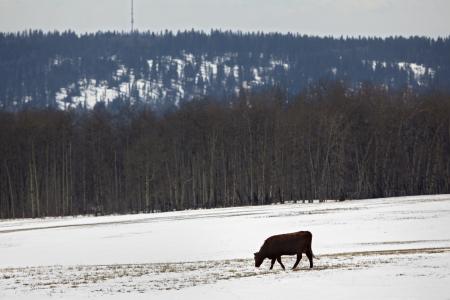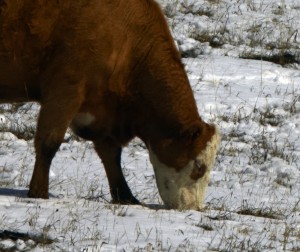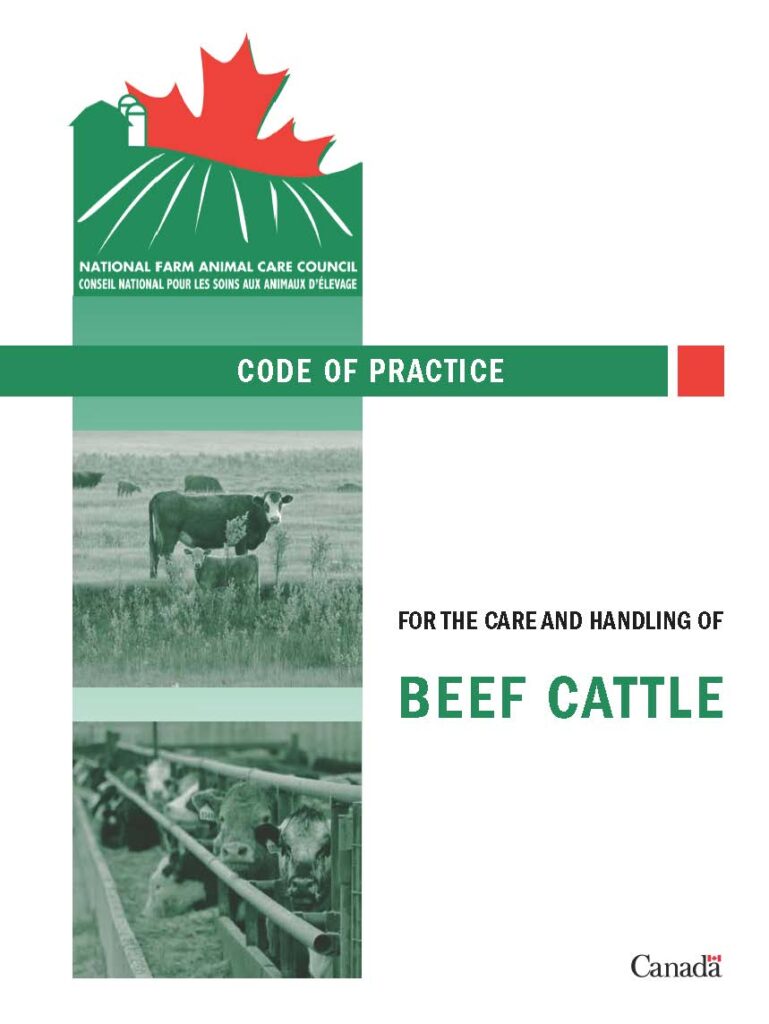Is it OK to use Snow as the Only Water Source for Cattle?
Remarque : cette page web n’est actuellement disponible qu’en anglais.
The Beef Cattle Research Council has funded a number of extended grazing research projects over the years. This puts us in contact with Canada’s leading forage, grazing, cattle nutrition, health and welfare experts, and helps us to answer the winter grazing management questions that inevitably pop up at this time of year.
Here’s a recent question from a producer in Quebec: “I’m reading all I can about bale grazing. Many times, ranchers tell me they don’t give water to cattle and there’s no problem with that. Do you agree? Is it possible to winter cattle only with snow with no negative effects?”

Some beef producers do use snow as a water source for part of the winter. These are typically producers who are using stockpiled pastures, swath grazing, or bale grazing. On winter pastures, the cattle often need to push through snow to get to the feed. The snow gets on the feed, and so the cattle eat some snow with the feed. The snow melts in the rumen, and provides water to the animal.
Section 2.2 (page 12) of the new Beef Code of Practice talks about using snow as a water source.
Download the Code of Practice (English)
Download the Code of Practice (French)
It is possible to use snow as the water source for cattle, under certain conditions:
- You need to have snow! Snow on the other side of the fence is not good enough… the cattle need to be able to reach it.
- The snow needs to be clean.
- The snow needs to be loose; cows can’t eat snow that is frozen solid or crusted over.
But there can be serious problems when relying on snow as a water source, especially when you or your cattle are new to this program, and/or when the weather doesn’t cooperate.
Here are some critically important things to remember:
- Check your cattle often, regardless of how you manage them in winter. If they are standing by the gate bawling, there is a problem. If they’re hungry, they may be out of feed, or may not be getting enough water. If they are losing body condition, they need better or more feed. They also need to have access to natural or man-made shelter and/or bedding.
- Cows often need some time to learn how to eat snow (or graze in winter), so keep a very close eye on them.
- The cow uses heat energy from the rumen to melt the snow, so their energy requirements will be higher.
- Feed quality needs to be adequate if you are using snow as a water source (see point 3).
- Don’t use snow as the sole water source for thin cows, nursing cows or young, growing cattle. The extra energy demands (see point 3) will be extra hard on them.

Snow is not always a reliable water source. It is not always there, it is not always clean, and sometimes it is frozen too hard for cattle to eat. So if you are using snow as a water source, you need to watch your cattle and snow conditions VERY closely. Dehydration will kill animals a lot faster than starvation, so animal welfare concerns can develop very quickly. You also need a plan “B” – how will you get water to the cows (or the cows to water) if the snow runs out, gets trampled in, or freezes over?
On a related note, holes chopped in an ice-covered dugout or pond can also be a risky water source. The ice may be thick and strong enough to support a few cattle, but if the hole freezes over and isn’t re-opened soon enough, thirsty cattle may crowd onto the ice. Their combined weight may cause the ice to break, ending up with drowned cattle.
Ask your provincial beef extension experts, nutritionist and/or veterinarian for advice before you start using snow as a sole water source. They may have some specific advice for your part of the country, and may be able to put you in touch with other producers in your area who have had practical experience and success with this management approach.
Do you have experience or advice on using snow as a water source for cattle? Comment below.
Learn more
- Tips for Successful Extended Grazing to Reduce Winter Feeding Costs (BCRC Blog post)
- Extended Grazing (BCRC Web page)
- Beef Research School: What you Need to Know about Winter Feeding (RealAgriculture.com)
Click here to subscribe to the BCRC Blog and receive email notifications when new content is posted.
The sharing or reprinting of this BCRC Blog article is welcome and encouraged. Please provide acknowledgement to the Beef Cattle Research Council, list the website address, www.BeefResearch.ca, and let us know you chose to share the article by emailing us at info@beefresearch.ca.
We welcome your questions, comments and suggestions. Contact us directly or generate public discussion by posting your thoughts below.
